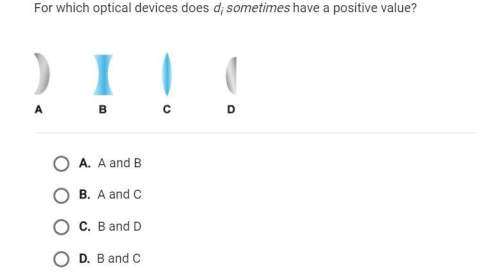
Physics, 24.06.2020 02:01 Skylar4483
Suppose a stone is thrown vertically upward from the edge of a cliff on Mars (where the acceleration due to gravity is only about 12 ft/s2 with an initial velocity of 64 ft/s from a height of 192 ft above the ground. The height s of the stone above the ground after t seconds is given by
s=−6t2+64t+192
a. Determine the velocity v of the stone after t seconds. b. When does the stone reach its highest point? c. What is the height of the stone at the highest point? d. When does the stone strike the ground? e. With what velocity does the stone strike the ground?

Answers: 1


Other questions on the subject: Physics

Physics, 22.06.2019 03:00, conceitedkayy1865
According to newtons universal law of gravitation, which would change the parh of the ball so it traces out widest curved path possible?
Answers: 1

Physics, 22.06.2019 11:30, tommyaberman
You've already seen the value of 9.8 in this lesson. what's this value called? what quantity does it represent?
Answers: 2

Physics, 22.06.2019 14:00, mariahgriego4126
Why is rain likely when warm, moisture-laden air meets cold air? a) the lighter warm air will rise and cool down, causing condensation and rain. b) the cold air moves faster and pushes the warm air away, causing condensation and rain. c) the moisture in the warm air condenses on contact with the cold air, causing rain to fall. d) the cold air mixes with the warm air, reducing its temperature causing moisture to condense.
Answers: 1

Physics, 22.06.2019 15:30, Mhayslett12
To understand the electric potential and electric field of a point charge in three dimensions consider a positive point charge q, located at the origin of three-dimensional space. throughout this problem, use k in place of 14? ? 0. part adue to symmetry, the electric field of a point charge at the origin must point from the origin. answer in one word. part bfind e(r), the magnitude of the electric field at distance r from the point charge q. express your answer in terms of r, k, and q. part cfind v(r), the electric potential at distance rfrom the point charge q. express your answer in terms of r, k, and q part dwhich of the following is the correct relationship between the magnitude of a radial electric field and its associated electric potential ? more than one answer may be correct for the particular case of a point charge at the origin, but you should choose the correct general relationship. a)e(r)=dv(r)drb)e(r)=v(r)rc)e(r)=? dv(r)drd)e(r)=? v(r)r
Answers: 2
You know the right answer?
Suppose a stone is thrown vertically upward from the edge of a cliff on Mars (where the acceleration...
Questions in other subjects:

Mathematics, 19.01.2021 18:40

Mathematics, 19.01.2021 18:40

Mathematics, 19.01.2021 18:40

Mathematics, 19.01.2021 18:40

English, 19.01.2021 18:40


Mathematics, 19.01.2021 18:40


Geography, 19.01.2021 18:40

Mathematics, 19.01.2021 18:40

 (1)
(1) (2)
(2)







